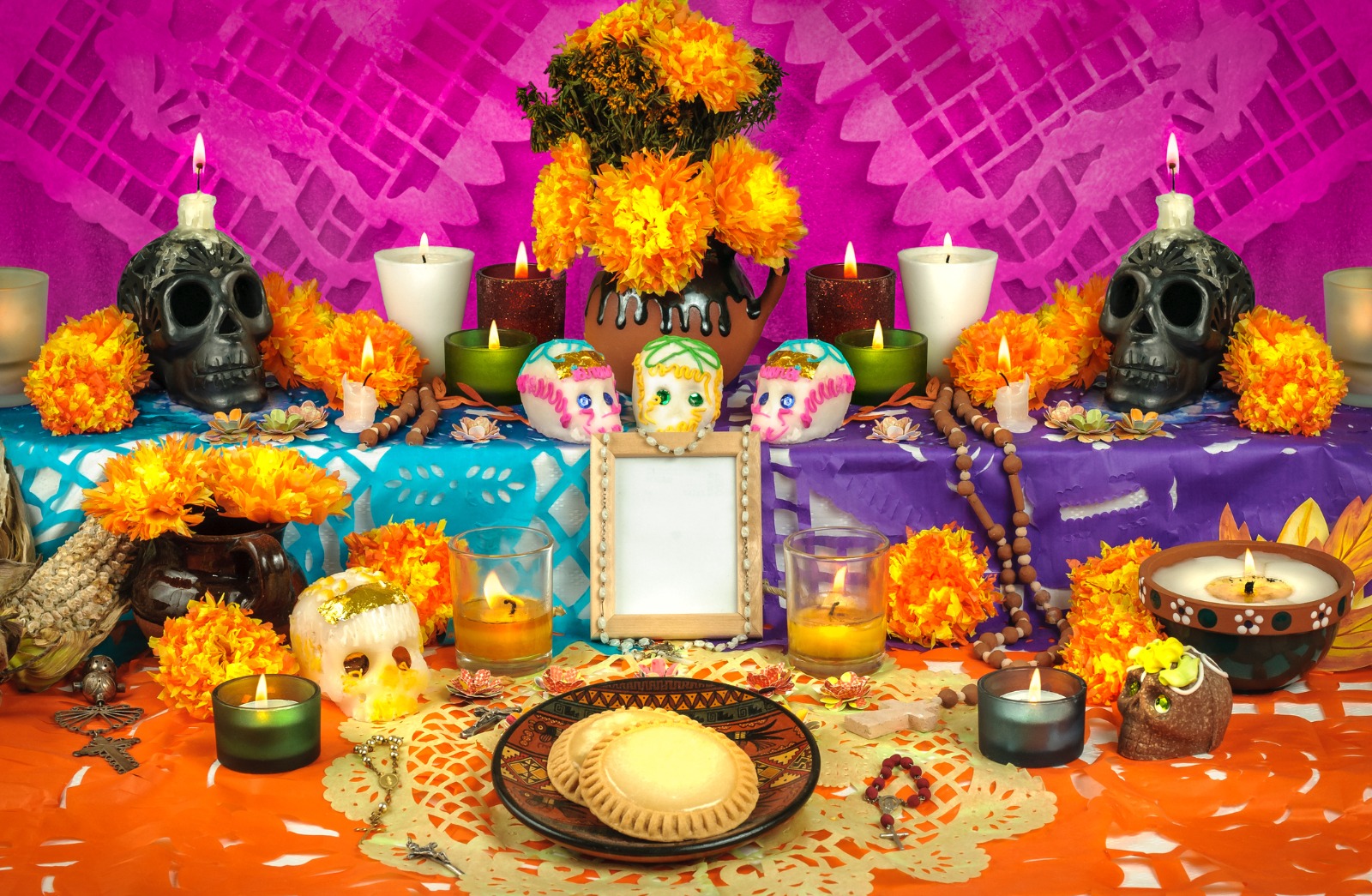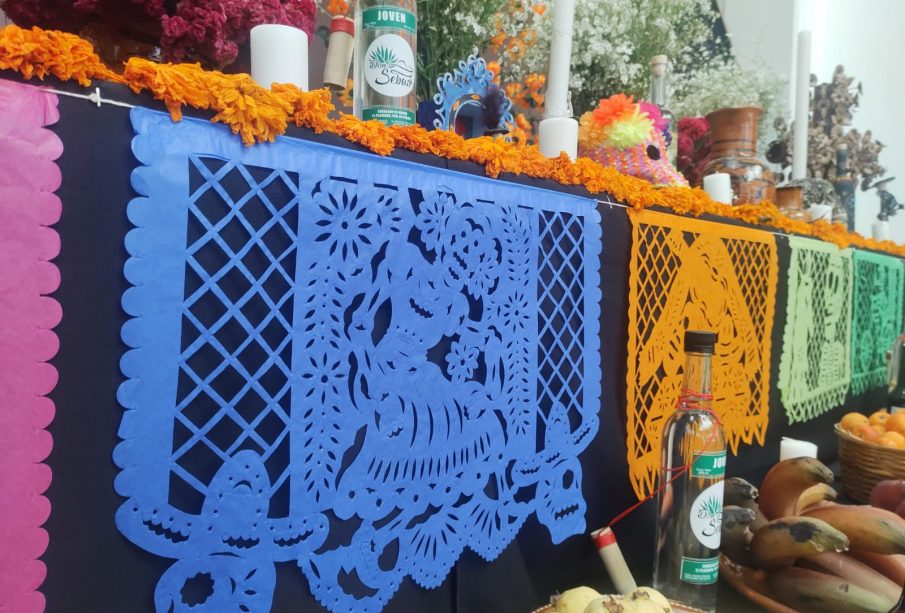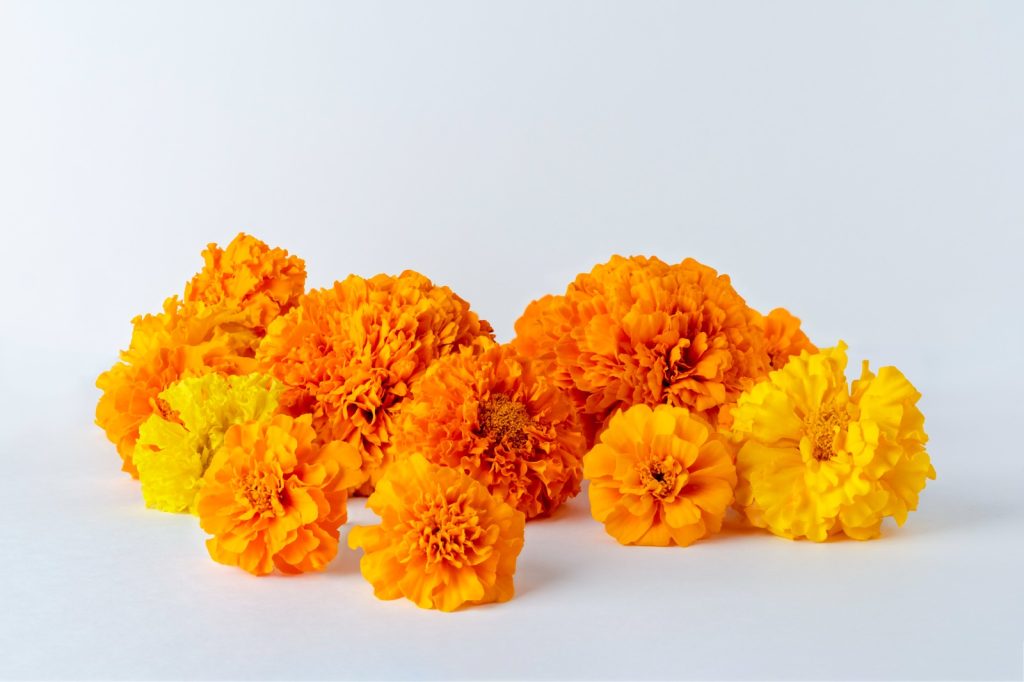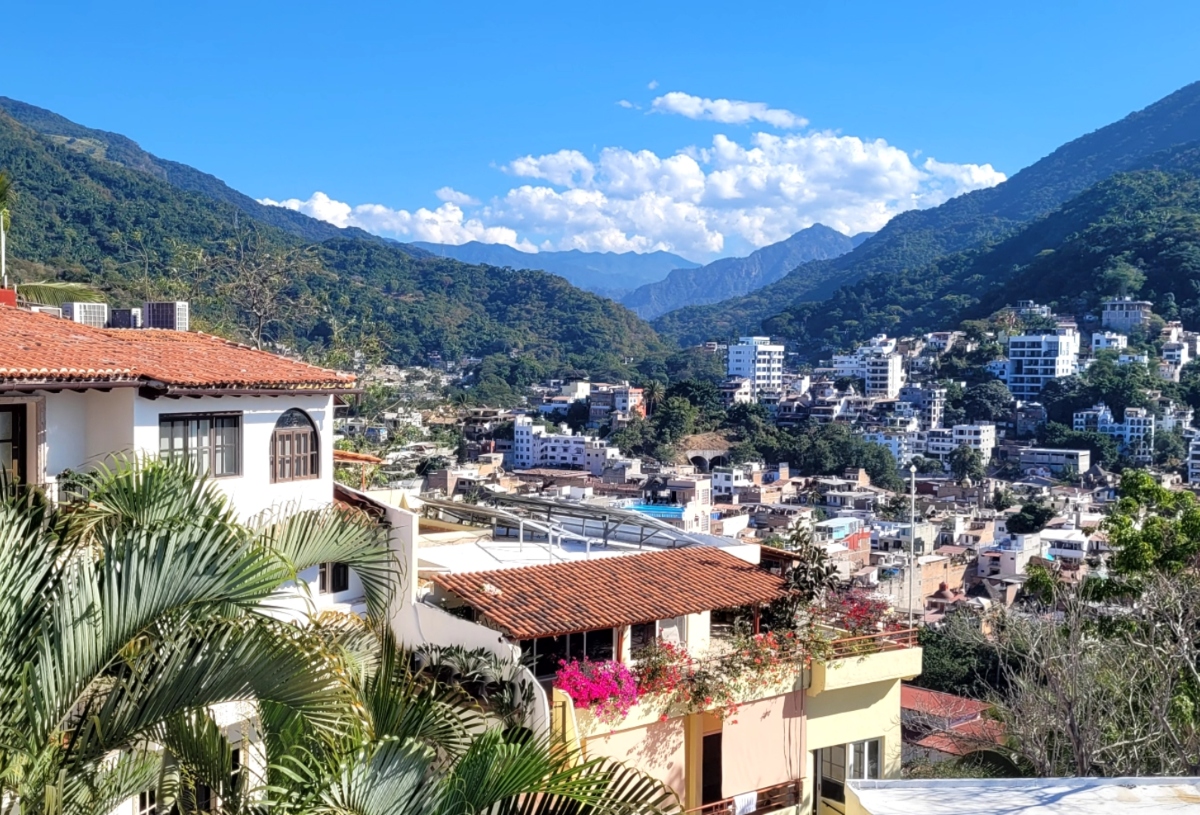
Papel picado and marigolds, a Day of the Dead staple
October 27, 2023
Papel picado and marigold flowers, known as cempasúchil, play integral roles in creating a vibrant and symbolic display of the Day of the Dead altars. Papel picado, intricately cut tissue paper, adorns the altar with colorful patterns and delicate designs, representing the fragility of life.. Marigold flowers, with their bright orange and yellow hues, are believed to attract the spirits of the deceased with their vibrant colors and distinct aroma.
Papel picado
The origin of papel picado in the celebration of the Day of the Dead in Mexico can be traced back to the town of San Salvador Huixcolotla in the state of Puebla. This traditional art form, characterized by its vibrant colors and intricate geometric designs, has a rich history.

Papel picado, which is made from papel China originally from China, was introduced to Mexico from Europe in the 19th century. Initially, it was sold in the stores of the haciendas. However, it was in San Salvador Huixcolotla where the true art of papel picado flourished. Skilled artisans dedicated their talent and creativity to create elaborate figures with precise cuts, passing down the tradition to future generations.
In 1998, the papel picado of San Salvador Huixcolotla was officially recognized as a cultural heritage of Puebla. This recognition brought national and international acclaim to this craft.
Papel picado is not only used in the Day of the Dead celebrations but also in various other occasions such as patriotic festivities, weddings, quinceañeras, baptisms, and religious ceremonies. It holds a significant presence in ofrendas, which are offerings made to honor the deceased.-
Meaning of papel picado colors
- Orange: mourning
- Purple: reference to the Catholic religion
- Blue: for those who died by drowning
- Red: symbolizes blood
- Green: in memory of the young people who passed away
- White: symbolizing the purity of deceased children
- Yellow: dedicated to the elderly
- Black: representing the underworld
Marigold
The marigold flower, scientifically known as Tagetes erecta, holds significant cultural importance in Mexico. Its aesthetic appeal aside, marigolds carry profound symbolic meaning, particularly in relation to life and death, making them an ideal choice for the Day of the Dead festivities.
Marigolds are believed to symbolize the warmth and light of the sun, with their vibrant colors thought to guide the souls of the departed back to the realm of the living during the Day of the Dead. This concept beautifully aligns with the central principle of the celebration, which is to honor and remember loved ones who have passed away.

Marigolds are also seen as a means to provide solace to the spirits of the deceased. Their vibrant petals and earthy fragrance are said to be pleasing to these spirits, which is why marigold flower petals are often scattered on altars, graves, and even in homes during the festivities.
Day of the Dead Flowers
While various flowers are utilized in Day of the Dead traditions, the marigold flower stands out due to its profound symbolism. It is frequently incorporated into ofrendas (offerings) alongside favorite foods, candles, and mementos of the departed. These ofrendas are arranged to create a welcoming space for the spirits to return and partake in the offerings left for them.
The Meaning of the Marigold Flower
The association of the marigold flower with death is not morbid; rather, it signifies a celebration of life’s cyclical nature. In Mexican culture, death is not viewed as an end, but rather as a continuation of the journey. The vibrant colors of the marigold and its connection to the sun symbolize this belief, emphasizing the everlasting cycle of life.
------ADVERTISEMENT------
------ADVERTISEMENT------
------ADVERTISEMENT------
------ADVERTISEMENT------


